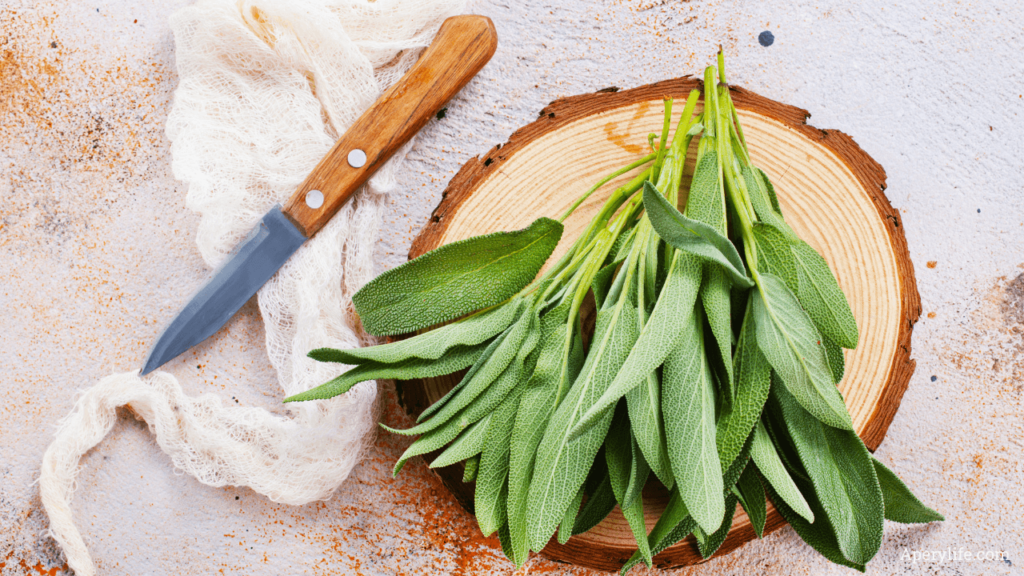Introduction
Sage (Salvia officinalis) is one of the oldest and most valued aromatic herbs, used for centuries to flavor dishes and for its healing properties. With its unmistakable aroma and velvety leaves, sage is an essential element of Mediterranean cuisine and a valuable ally for well-being. The name “sage” comes from the Latin salvus, meaning “healthy,” a reference to its health-promoting qualities.
Plant Characteristics
Sage is a perennial plant belonging to the Lamiaceae family. It can reach a height of about 60–70 cm and features green-gray, oval, slightly velvety leaves, along with small purple, blue, or pink flowers that bloom in spring and summer. It is a hardy plant, easy to grow, and adaptable to various climates and soils.
Nutritional Properties and Health Benefits
Sage is not only a flavorful herb but also a plant rich in beneficial compounds:
- Anti-inflammatory Properties: Sage’s essential oils can help reduce inflammation and muscle pain.
- Digestive Aid: Promotes digestion and can relieve bloating and indigestion.
- Rich in Antioxidants: Contains compounds like flavonoids and rosmarinic acid, which protect cells from free radical damage.
- Calming Effect: Useful for reducing anxiety and stress, thanks to its relaxing aroma.
- Respiratory Support: Traditionally used to soothe sore throats, coughs, and colds.
- Hormonal Regulation: Can help alleviate symptoms of menopause and menstrual discomfort.

Culinary Uses
Sage is one of the most versatile herbs, perfect for enhancing many dishes with its intense and enveloping flavor:
- Meat Dishes: Pairs wonderfully with white meats like chicken and turkey, as well as pork or veal roasts.
- Butter and Sage: A classic sauce for ravioli, gnocchi, and fresh pasta.
- Fried Sage Leaves: Can be battered and fried for a crispy and delicious appetizer.
- Soups and Broths: Sage adds a unique aroma to legume and vegetable soups.
- Infusions and Teas: Sage leaves can be used to prepare calming and digestive herbal teas.
- Marinades: Ideal for flavoring oils, butter, and vinegars.
How to Grow Sage
Growing sage is easy and suitable even for beginners:
- Exposure: Sage requires a sunny position to grow lush and healthy.
- Soil: Prefers well-drained, light soil with a neutral or alkaline pH.
- Watering: It is drought-resistant, so watering is only needed when the soil is dry. Be careful not to overwater to prevent root rot.
- Pruning: Regular pruning is important to encourage new leaf growth and prevent the formation of woody branches.
- Harvesting: Leaves can be harvested year-round, but the best time is early morning when the essential oils are most concentrated.
- Container Cultivation: Sage can be easily grown in pots on balconies and terraces, providing a continuous supply of fresh leaves.

Interesting Facts About Sage
- Sacred Plant: In ancient Rome, sage was considered sacred and harvested with specific rituals.
- Symbol of Wisdom: In many cultures, sage is associated with wisdom and protection.
- Cosmetic Use: Sage is often used in skincare products for its purifying and toning effects.
- Natural Remedy: During the Middle Ages, sage was used to treat a wide range of ailments and was nicknamed “the herb of health.”
Usage Precautions
While sage is generally safe, excessive consumption of sage teas or supplements may cause side effects, particularly in pregnant or breastfeeding women. It’s always best to use it in moderation.
Conclusion
Sage is an extraordinary aromatic herb that combines flavor, tradition, and wellness. With its intense aroma and health benefits, it is an indispensable ingredient in the kitchen and a natural ally for health. Easy to grow and versatile, sage deserves a prominent place both in the garden and in the pantry of every cooking enthusiast.
All rights reserved © Copyright Aperylife.com